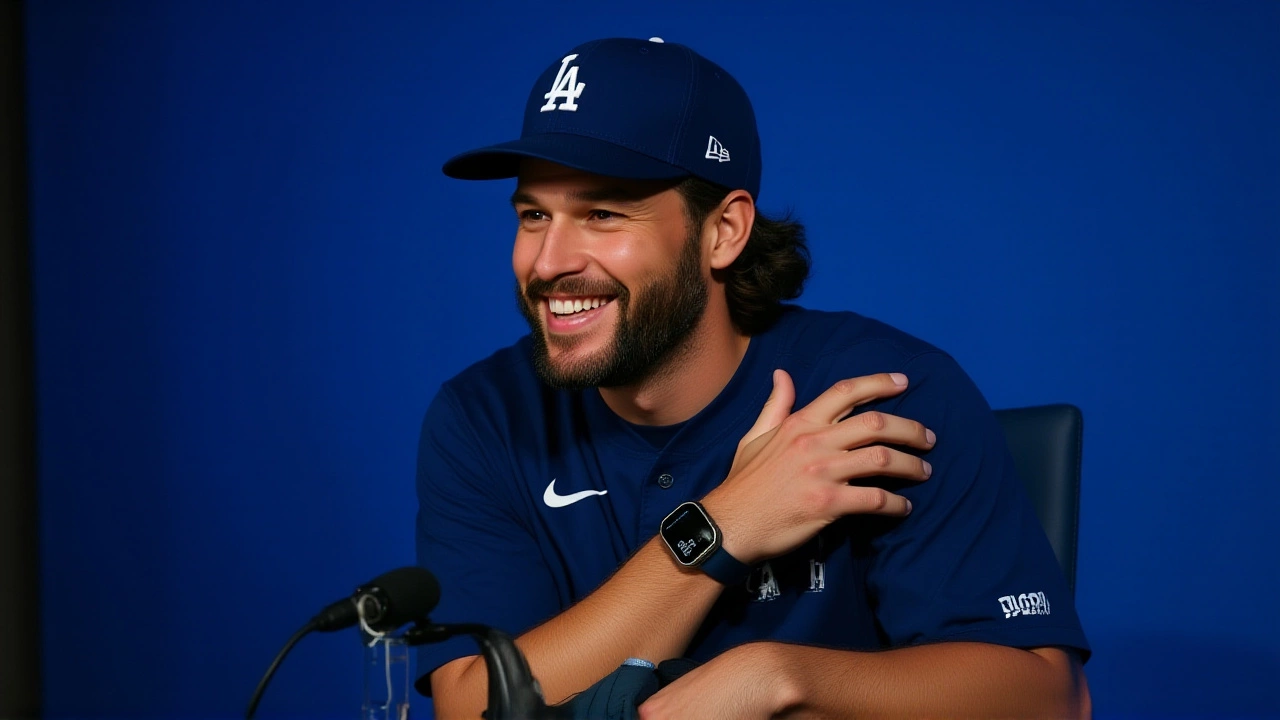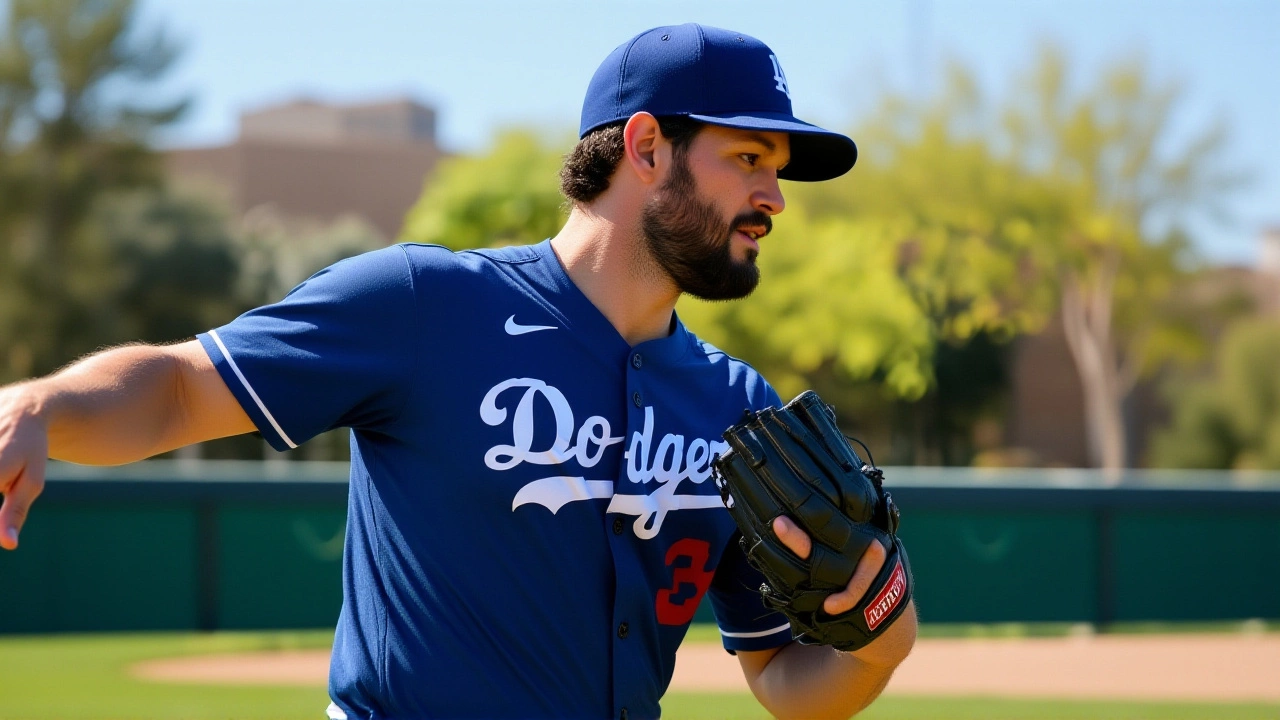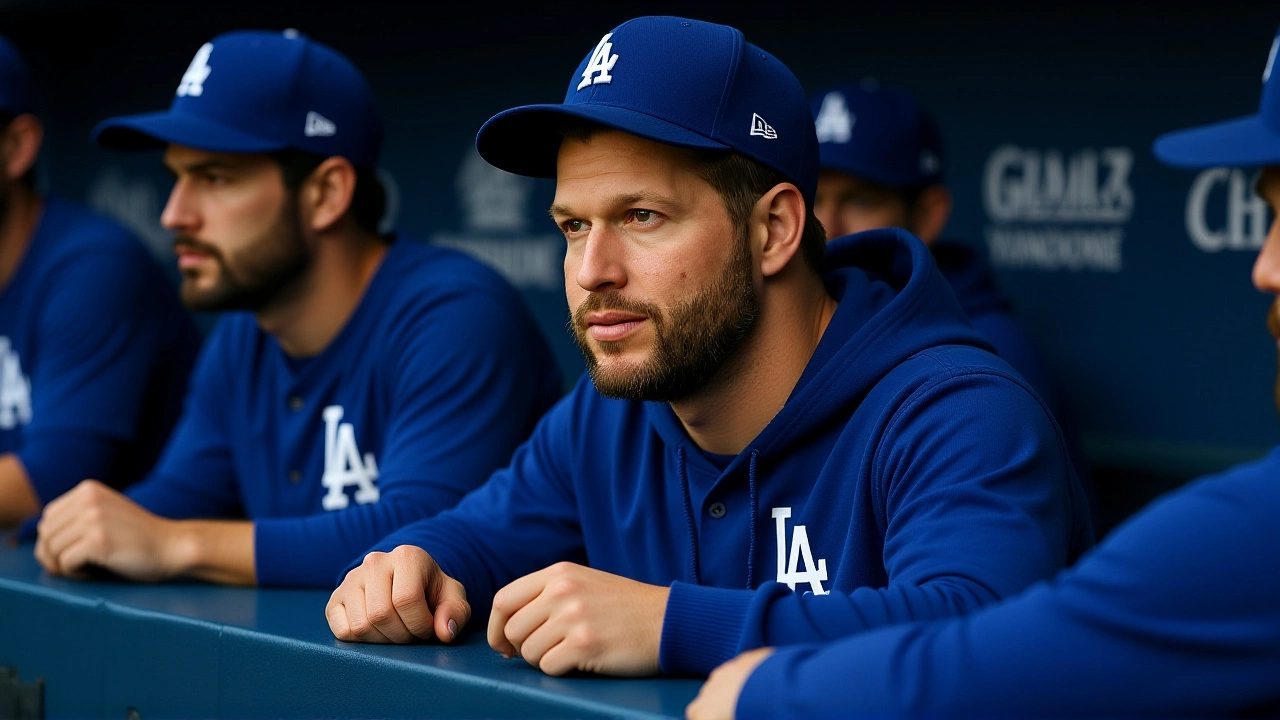When Clayton Kershaw stepped up to the microphone after Game 2 of the 2025 World Series on October 25, he didn’t talk about his own legacy. He talked about the 27-year-old Japanese right-hander beside him — Yoshinobu Yamamoto. In a moment that felt like passing the torch, Kershaw, the 37-year-old Dodgers icon with 18 seasons of heartbreak and glory behind him, praised Yamamoto for throwing consecutive complete games in the postseason — a feat unseen in MLB since Madison Bumgarner did it in the 2014 NLCS. And it wasn’t just praise. It was awe.
A Rare Feat in the Modern Era
Yamamoto didn’t just pitch well. He pitched all the way. On October 23, he threw a 112-pitch shutout in Game 1 of the World Series. Two days later, on October 25, he went the distance again — 124 pitches, eight strikeouts, zero walks — in a 4-1 win over the Los Angeles Dodgers’ opponent. Only two pitchers in MLB history had done it before: Curt Schilling in the 2001 World Series and Bumgarner in 2014. Since 2000, there had been just 12 complete games total in the entire postseason. Yamamoto delivered two in 48 hours.
The irony? Complete games are practically extinct in today’s MLB. Bullpen usage has become gospel. Managers treat starters like batteries with 90-pitch limits. Yet here was Yamamoto, a pitcher who spent seven years in Nippon Professional Baseball before joining the Dodgers in 2024, outlasting every modern trend. "He’s not adverse to this," Kershaw said in his raw, unfiltered post-game interview. "He knows what he’s doing."
From Okayama to Dodger Stadium
Yamamoto, born August 17, 1998, in Okayama, Japan, didn’t come to the U.S. as a hype train. He came as a quiet workhorse. In Japan, he won three Pacific League titles with the Orix Buffaloes, posting a 2.48 ERA over 112 starts. His delivery — a deceptive, high-arm-slot fastball with a biting slider — translated almost perfectly. In his first MLB season, he went 15-6 with a 2.98 ERA. This October, he became the first pitcher since 2001 to throw 120+ pitches in back-to-back postseason games.
Kershaw, who’s seen it all — the 2017 collapse, the 2020 title, the seven straight playoff exits — admitted he didn’t see this coming. "Still no, I don’t think anybody could have predicted that," he said, shaking his head. "But uh… you know, hope maybe it’s a sign of more baseball."

The Clubhouse Culture That Made It Possible
Behind Yamamoto’s brilliance was a locker room that thrives on ritual. The Dodgers’ "homer hunch" game — where players guess who’ll hit a home run each night — became a quiet bonding tool. Dan, a bench player whose full name hasn’t surfaced, once picked a non-starter who homered. Teoscar Hernández, known in the clubhouse as "Barger," nailed it three times in a row. Kershaw himself was the subject of a clubhouse prophecy: "We said that Clayton Kershaw will get the final out of this," he chuckled. "As long as it’s a win, I’ll take that."
And then there’s "Kirk." Kershaw gave him credit for "a lot" of the team’s strategy, though the identity remains unconfirmed. Rumors point to pitching coach Kirk Rueter, a former Dodger pitcher who returned to the staff in 2023. If true, it’s poetic — Rueter, who pitched 18 years with a similar quiet grit, helping shape Yamamoto’s approach.
Kershaw’s Legacy, and the Weight of the Final Out
Kershaw’s postseason record? 13 wins, 13 losses. Twenty-eight appearances. Eight years of near-misses. He’s thrown 1,444 innings in the playoffs — more than any left-hander in history. He’s won Cy Youngs, MVPs, and a ring in 2020. But he’s never had a pitcher like Yamamoto beside him. In 2009, he went 0-1. In 2013, 1-2. In 2014, 0-2. He’s known the weight of failure. Now, he’s watching someone else carry the load — and he’s not just cheering. He’s believing.
The Dodgers, founded in 1883 as the Brooklyn Atlantics, have won eight World Series. They’re chasing their ninth. And with Yamamoto on the mound, the possibility feels different. Not because he’s invincible — he’s human, after all — but because he’s unflinching. In an era of pitch counts and bullpen games, he’s doing what pitchers used to do: finish what they start.

What’s Next? The Series Hangs in the Balance
Game 3 shifts to the opponent’s ballpark on October 27. Yamamoto’s next start? Unclear. But if the Dodgers win Game 2 and 3, they’ll be one win from the title. Kershaw, who hasn’t started a playoff game since 2021, might not even pitch again. But he’s already made his mark — not with a strikeout, but with a moment of humility. "He’s been a professional for seven, eight years," Kershaw said. "He knows what he’s doing."
Maybe that’s the real story. Not the stats. Not the records. It’s the veteran seeing his future in a quiet young man who doesn’t need hype to be great.
Frequently Asked Questions
How rare are consecutive complete games in MLB postseason history?
Only three times in MLB history has a pitcher thrown complete games in back-to-back postseason starts: Curt Schilling in the 2001 World Series, Madison Bumgarner in the 2014 NLCS, and now Yoshinobu Yamamoto in the 2025 World Series. Since 2000, there have been just 12 complete games total in the entire postseason — making Yamamoto’s two in 48 hours one of the most statistically improbable feats in modern baseball.
Why is Yamamoto’s performance surprising given today’s pitching trends?
Modern MLB managers rarely let starters go beyond 100 pitches, especially in the playoffs. Relievers are used in high-leverage situations as early as the 5th inning. Yamamoto threw 112 pitches in Game 1 and 124 in Game 2 — both complete games — defying the norm. Since 2010, only 14 pitchers have thrown a complete game in the postseason; none have done it twice in a row. His endurance and efficiency make him an outlier in today’s game.
What role did Clayton Kershaw play in Yamamoto’s development?
Kershaw didn’t coach Yamamoto directly, but his presence in the clubhouse created a culture of quiet professionalism. As a 10-time All-Star and three-time Cy Young winner who’s battled postseason heartbreak, Kershaw’s calm demeanor and work ethic set a tone. His public praise — especially his emphasis on Yamamoto’s Japanese experience — helped legitimize the newcomer’s approach in the eyes of teammates and fans alike.
How does Yamamoto’s success compare to other Japanese pitchers in MLB?
While pitchers like Yu Darvish and Shohei Ohtani made bigger headlines, Yamamoto’s postseason performance stands apart. Darvish has struggled with postseason consistency, and Ohtani’s role as a two-way player limits his pitching workload. Yamamoto, by contrast, is a pure pitcher who’s thrived under pressure. His back-to-back complete games in the World Series are the most dominant postseason stretch by a Japanese pitcher in MLB history.
What’s the significance of the Dodgers’ "homer hunch" game?
The "homer hunch" is more than a superstition — it’s a team-building ritual that reduces pressure and builds camaraderie. By letting players predict home run hitters — even non-starters — the Dodgers create a shared sense of ownership in the game’s outcomes. Teoscar Hernández’s repeated correct picks and Dan’s lucky guess show how deeply this ritual is woven into the team’s identity, reinforcing trust and unpredictability — two qualities that helped Yamamoto thrive.
Can the Dodgers win their ninth World Series title in 2025?
They’re one win away. After Yamamoto’s historic Game 2 performance, the Dodgers hold a 2-0 series lead. With their bullpen rested and Kershaw’s leadership intact, their chances are strong. But baseball doesn’t guarantee outcomes — even with a pitcher like Yamamoto on the mound. The opponent still has life, and the pressure mounts with every pitch. Still, for the first time since 2020, the Dodgers feel like they’re not just playing for a title — they’re playing for history.

